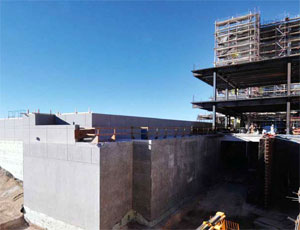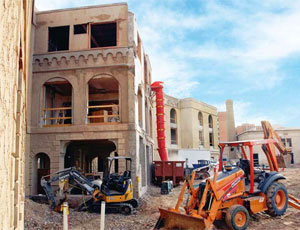Completion of a new water treatment plant in Port Angeles, Wash. in December was one of the final projects necessary for the start of the largest dam removal project in the United States.


Congress approved removal of the Elwha River and Glines Canyon Dams in 1993, with demolition scheduled for 2009, until rising costs for the $308-million project delayed the start.
The National Park Service was ordered to remove the Elwha and Glines Canyon Dams in the Olympic National Park in Northwest Washington state, following attempts to relicense the dams. “Environmental studies showed that the cost of meeting salmon mitigation was too high,” says David Thomas, the National Park Service project manager this summer.
The Glines Canyon and Elwha dams blocked access to 70 miles of salmon habitat when they were built in the 1920s. When they are removed, thousands of cubic yards of silt is expected to flow down the Elwha River.
“The water treatment plants downstream aren’t able to handle that,” says Thomas. As a result, the Port Angeles Water Treatment Plant was built by Watts/Korsmo A JV, a joint venture of Watts Constructors of Gig Harbor, Wash. and John Korsmo Construction of Tacoma, under a $25.5-million construction contract to provide up to 10.6 million gallons of treated water daily to the City’s water distribution system. Components include administration offices, pump room, shop and a process area with Actiflo and filter basins that stand 18-ft out of the ground with 2-ft thick concrete walls, says project manager Jay Stewart with Korsmo. An underground clear well to hold approximately 600,000 gal of water and a sludge drying bed and recycle basin round out the project. The two-year construction project required a total of 6,100 cubic yards of concrete.
Watts Constructors is also constructing a much larger collection of facilities, including the Elwha Surface Water Intake and Elwha Water Treatment Plant which serves a nearby paper mill, plus roadway improvements to facilitate construction access and a flood control levee. Total project cost is $69.7 million with an expected completion date of 2011.
Another step forward in the process came from a $16.4-million federal American Recovery and Reinvestment Act grant funding construction of the Lower Elwha Klallam Tribal Fish Hatchery, which will shave one year off the delayed start for the dam removal, which had been postponed to 2012. The contract was awarded on Sept. 18 to the James W. Fowler Co., Dallas, Ore.
“The job will allow us to retain about 15 employees,” says Mark Weisensee, project manager with Fowler.
Now the contract for the removal of the two dams is scheduled for award late in fiscal year 2010 with demolition slated for the spring of 2011.
The first step in removing the Elwha dam will be to lower the reservoir’s water level approximately 15 ft. A temporary diversion channel will then be excavated through the left spillway to allow Lake Aldwell to be further drained. Coffer dams will be installed to direct reservoir outflow into the temporary diversion channel, which will allow the remaining water immediately behind the concrete dam to be pumped out and the fill material behind the dam to be removed under dry conditions. The concrete dam can then be removed and the original river channel restored.
After the powerhouse and all other structures are removed and the temporary diversion channel refilled, the site will be re-contoured and revegetated to pre-dam conditions.


Post a comment to this article
Report Abusive Comment